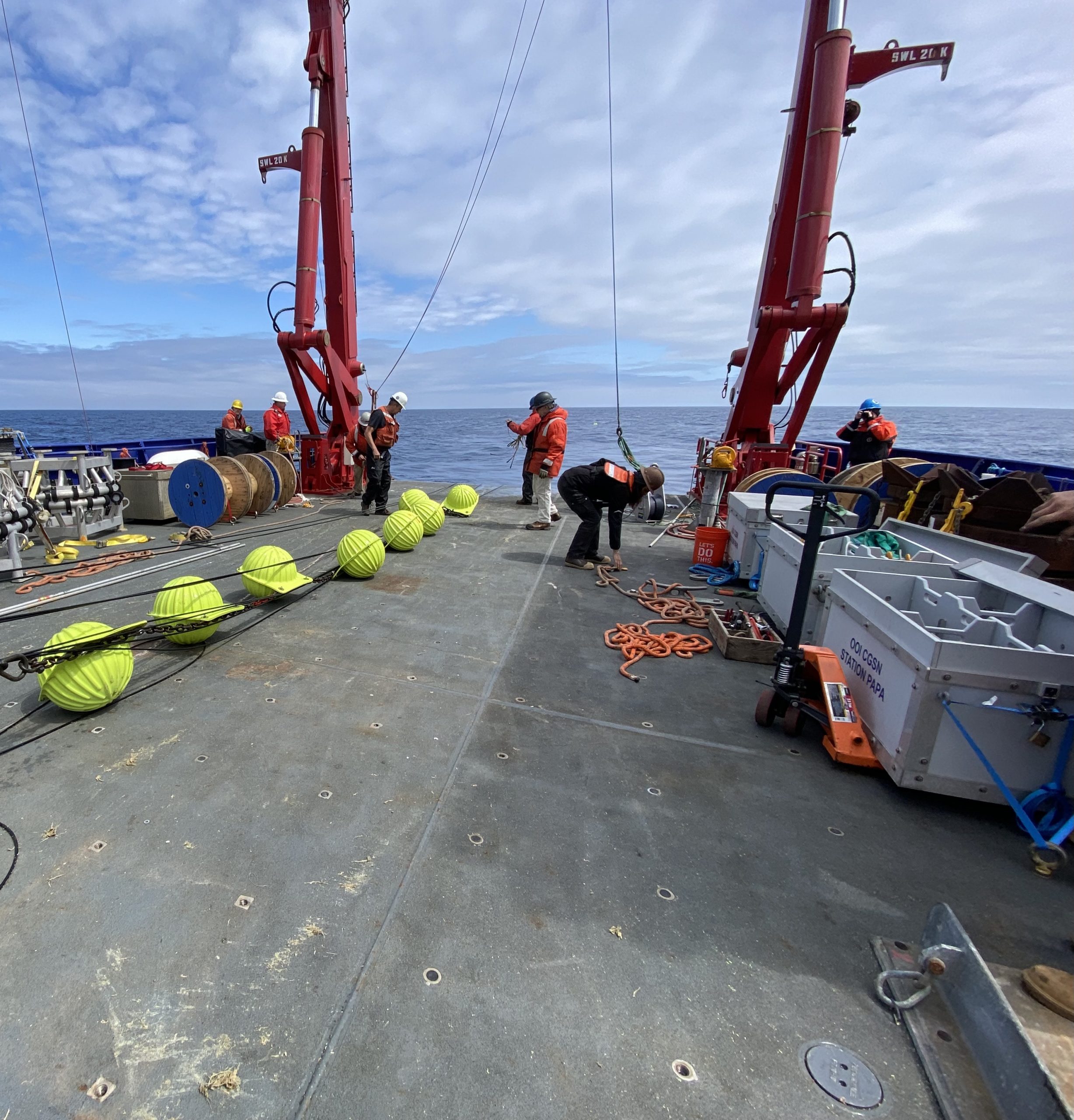Posts Tagged ‘R/V Sikiluaq’
Global Station Papa Team Recovers Two Years of Data
The winds seemed to have blown in favor of the Global Station Papa 8 team last month. Their mission to “turn” (recover old and deploy new) moorings went without incident, and two-years of data were recovered after COVID canceled the 2020 cruise.
On July 18, the seven members of the Station Papa 8 team set out aboard the R/V Sikuliaq from Seward, Alaska following a seven-day COVID isolation period. The weather was beautiful the first three days while in transit to Station Papa, located in the Gulf of Alaska in the Northeast Pacific, and weather remained favorable for work for the rest of the cruise.
Over the 16-day period at sea, the team successfully deployed and recovered two flanking moorings and one hybrid profiler mooring, and deployed and recovered two open ocean gliders. While on station, the team also conducted 11 CTD (conductivity, temperature, and depth) casts that help calibrate the instruments and validate the data they collect.
This eighth turn of the Station Papa Array was particularly important because the annual expedition to turn the array last year was canceled due to constraints imposed by the COVID-19 pandemic. Instrument data are downloaded upon recovery, and following a Quality Assessment/Quality Control (QA/QC) review, nearly two years of ocean observation data may have been recovered. As part of the review, OOI’s Coastal and Global Scale Node team will inspect the instruments for bio-fouling and reagent use to assess whether there was any significant impact to the data.
“We were really pleased to see that the instruments were still collecting and recording data, even after being in the water for almost two years,” said Kris Newhall, chief scientist of the Station Papa 8 expedition. “In spite of limited battery power and challenging conditions, most instruments continued to collect data for the duration of the two-year extended deployment.”
[embed]http://https://vimeo.com/585980063[/embed] [media-caption path="http://https://vimeo.com/585980063" link="#"]Shown above is the recovery of a Global Station Papa Array subsurface mooring by the team aboard the R/V Sikuliaq. The mooring was coated with marine life that had been growing there for the past two years. The team cleaned the mooring as the ship transited to its next station. Video courtesy of Bern McKiernan. [/media-caption]The periodic turning of the moorings present opportunities to incorporate design innovations into the arrays. The new moorings have improved controllers and new positioning beacons with GPS and flashers built into the housing, which will help increase performance and simplify recovery.
The team returned to Seward on August 2, then made their way back to their home port in Woods Hole, MA. The data retrieved from the moorings will help researchers investigate topics related to climate, ocean circulation, biological productivity, and ocean acidification in this important region of the Northeast Pacific.
Read More

